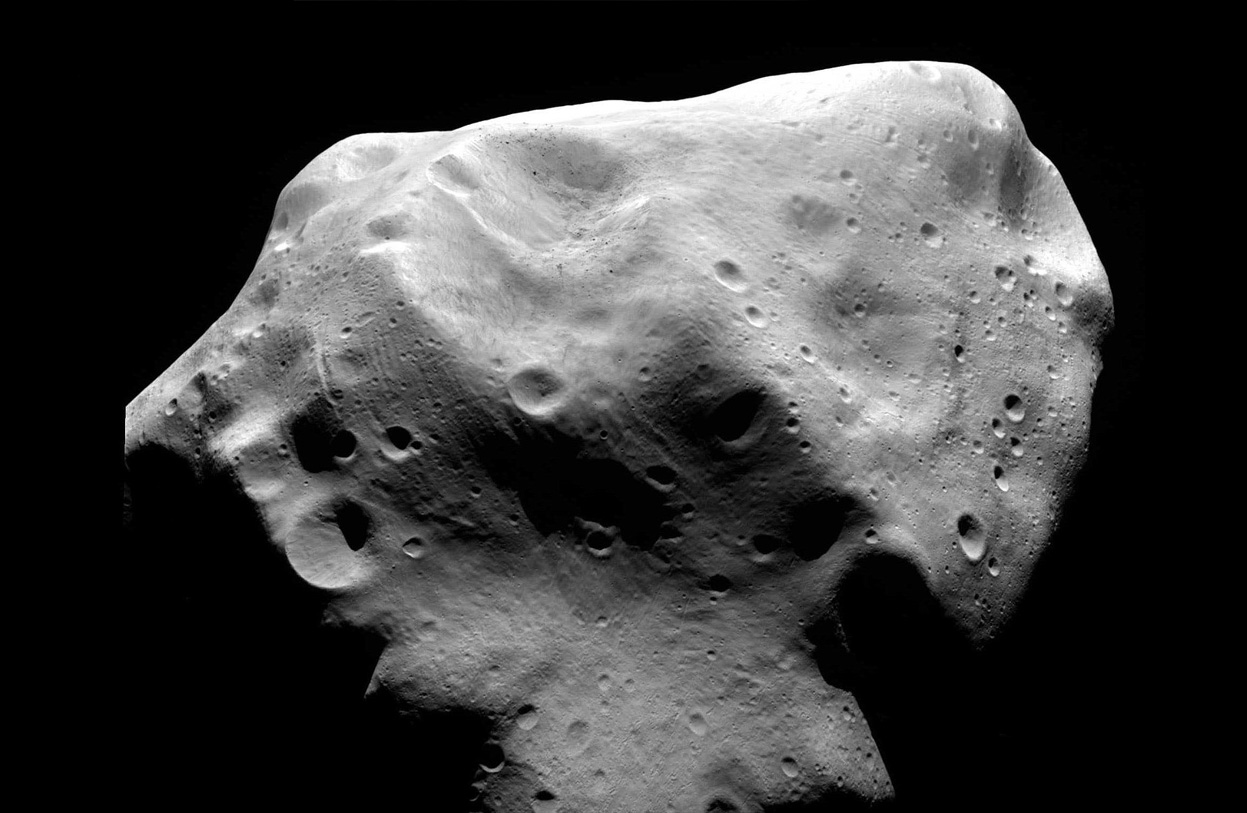Scientists reconstruct the collisional history of the most primitive asteroids [NOT TRANSLATED]

Foto3_21Lutetia
Asteroid 21 Lutetia during the maximum approach of Rosetta Mission. / ESA
According to the study, the range of sizes of asteroids that make up the main asteroid belt located between the orbits of Mars and Jupiter, indicates that each of these objects has been bombed at least a hundred million times by projectiles over twenty centimeters which have dug craters on the asteroid proportionally to its diameter and speed of impact.
Researchers have reconstructed the history of collisions by a physical model that reproduces the process over time and have compared it to the information we have right now from meteorites called chondrites. These meteorites form part of asteroids of a few hundred kilometres in diameter that consolidated some 4,560 million years ago. Since then, the solar system has been sculpted by giant asteroid collisions that marked the history of many of these objects.
“The meteorites called ordinary chondrites that we studiy in our laboratories come from small asteroids, markedly processed by impacts and, although they represent the first consolidated bodies around the sun, they keep the wounds caused by the innumerable impacts. Our work allows fundamental predictions on the degree of processing by collisions suffered by the vast majority of asteroids and also explains the the degree of processing observed in meteorites that reach Earth, “according to Josep M. Trigo, principal investigator of meteorites Group , smaller bodies and Planetary Sciences of the Institute of Space Sciences (IEEC-CSIC).
International work
The study is the result of many years of collaboration between the institutions involved in the investigation. The researcher Eike Beitz from the geophysical and extra-terrestrial physics group at the University of Braunschweig, Germany, and first author of the work has participated jointly with Prof. Jürgen Blum in understanding the physics behind the impacts and establish when they cause a crater or a disintegration of the asteroid. “Experiments conducted in laboratories to simulate the impacts have been instrumental in understanding the physics of the process and the key to establish the results of impacts of projectiles of sizes and speeds as diverse as happens in nature,” said Dr. Trigo.
Researcher Gabriela M. Parisi, University of La Plata, Argentina has been in charge of the statistical model. She has implemented a series of algorithms that reproduce the process of impact between asteroids described by random from the diameter distribution of asteroids from the main belt until reconstruct the collisional history of asteroids and explain the resulting products observed after 4,565 years of evolution.
Foto2_superficie21Lutetia
Surface with craters of asteroide 21 Lutetia/ESA
Asteroide 21 Lutetia
As a test model, the researchers replicated the physical characteristics of the asteroid 21 Lutetia that were studied for a rendezvous of the Rosetta mission of the European Space Agency (ESA). This asteroid is irregular but its major axis is 121 km and also shows a huge collisional processing evidence from the beginning of the planetary system, with large craters, one of 55 km in diameter. The model predicts these structures and that, as a result of this large excavation by projectiles, the layer of blocks stacked forming on its surface called regolith should have a thickness of 4 km. The various studies by the Rosetta probe on the surface of Lutetia seem to support this prediction model.
Future missions of asteroid sample collection
Several space agencies plan asteroids exploration missions and the return of samples of its surfaces. A clear example is the Hayabusa 2 mission of the Japanese space agency (JAXA) and OSIRIS Rex mission (NASA) that that will visit and return samples from two primitive asteroids. “A good strategy to retrieve and analyse representative samples of the protoplanetary disk materials” says Dr.Trigo “would search for asteroids of a few kilometres or hundreds of meters, result of catastrophic fragmentation rather than large asteroids to which we only can access to processed materials by impact of the thick outer layer called regolith “.
In this context, the article concludes that it is possible that much of not differentiated meteorites that arrived to Earth come from the layers of external regolith from large asteroids as evidenced by various degrees of metamorphism and mixing materials in most groups of chondrites. [NOT TRANSLATED]
